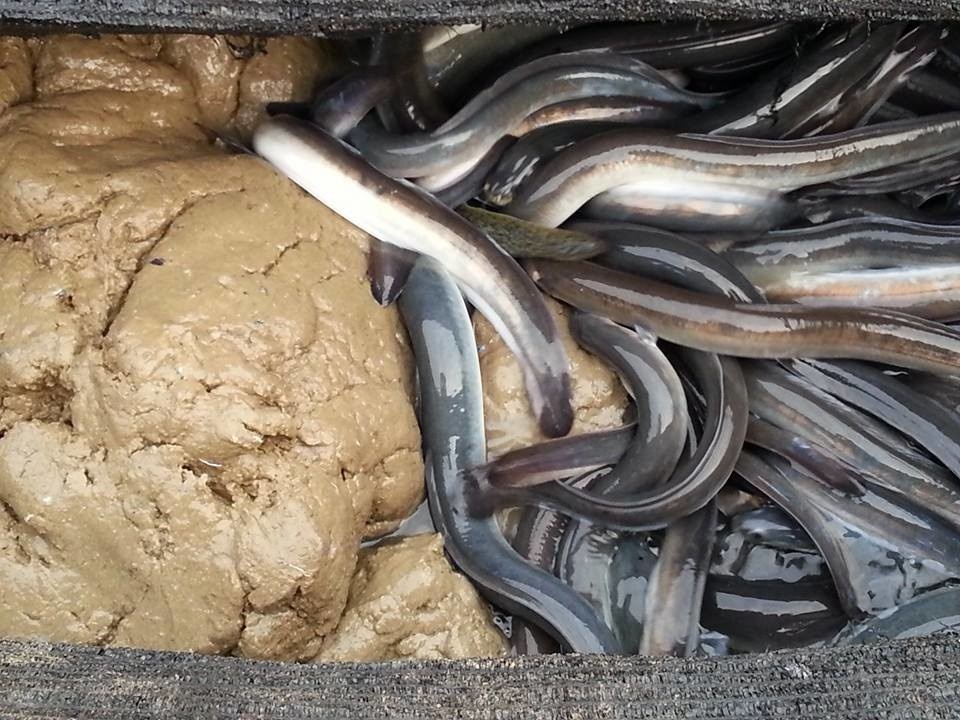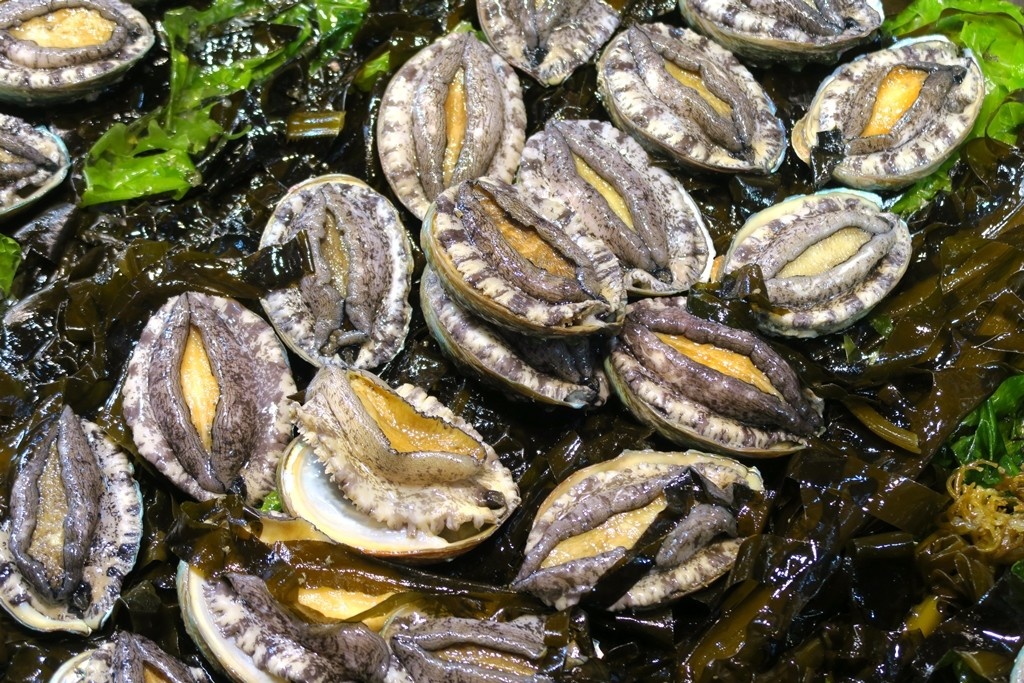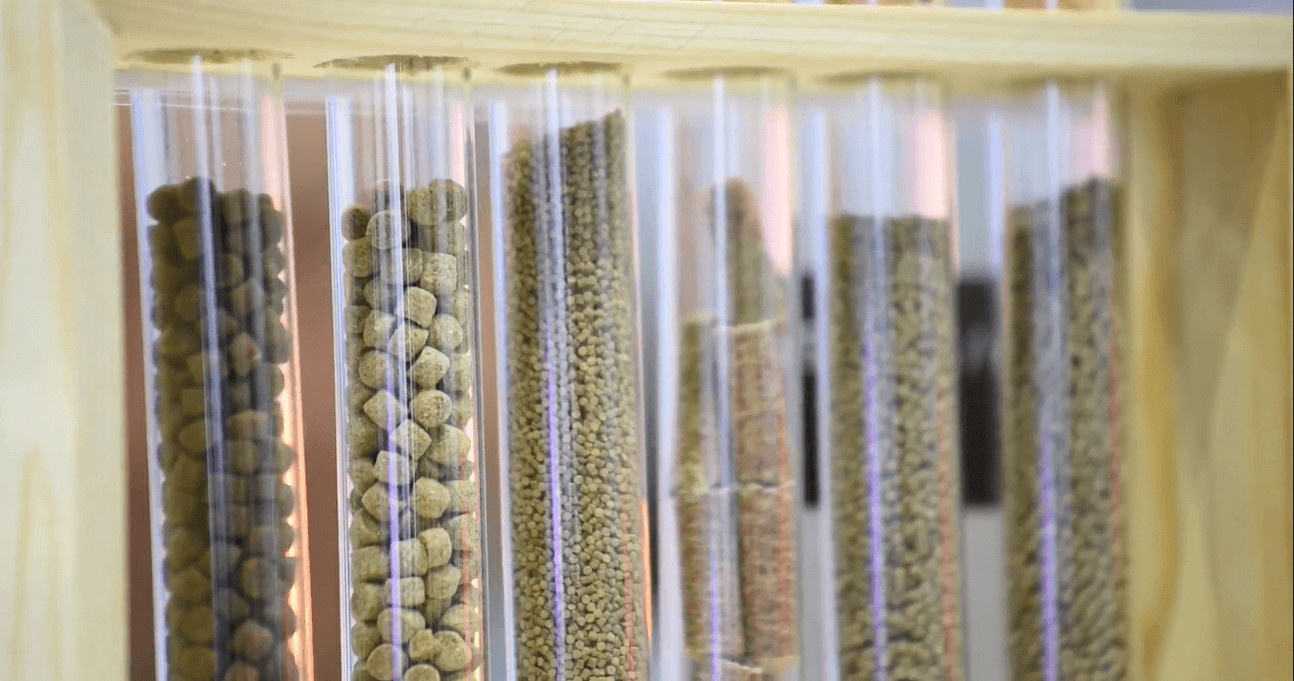IDAH also designs and manufactures machinery for specialized aqua feed such as eel feed, crab feed, abalone feed, and frogs. With a high reputation in aqua feed production solutions, guaranteed to help you with your production.

Eel Feed
The first AP pulverizers (AP-2) IDAH made was to make eel fish and it was in 1975. Eel feeds float and can be made in extrudate or powder form. Below shows a standard process to make eel feeds in powder form.
Raw Material
The raw material for eel feed mainly consists of high-quality fish meals and other high-protein ingredients. The material comes with an approximate moisture content of 10-12%
Daily tank storage
Daily tank storage will contain the material needed for production that day.
Dosing and Weighing
The material will be dosed based on the formula.
First mixing system
In here, coarse and powdery materials are mixed.
Pre-grinding system
The well-mixed material enters the coarse grinding by hammer mill.
Post-grinding system
In this step, the coarse-grinded material is further ground to produce a fine powder.
Second Mixing (Mash Feed)
This is the last step in making an eel feed. Water, oil, and other liquid are added to the mixture.

Crab and Abalone Feed
Crab and abalone feeds are made by pellet mills and they share a similar aquatic pelleting process line. The appearances are only different from the sizes (controlled by holes on pellet dies).
Raw Material
The raw material for crab and abalone feed consists of coarse and powdery material
Pre-grinding
Optional step for coarse material.
Pre-grinding will lower the
energy needed for ultra-fine grinding.
Daily Tank Storage
In general, the feed production line will utilize 12 raw material
bins.
Every bin will be filled with around 5-6 batches of material.
Dosing and Weighing
The material will be dosed based on the formula.
In the feed
production line, usually material will be processed by batch.
Post-grinding
Post-grinding is the final size reduction in the system.
It is common to use a pulverizer for producing ultra-fine powder.
Wet mixing
Water, oil, and other liquid material will be added.
This will help to hydrate the material before the cooking
process.
Pelleting
Pelleting starts with pre-conditioning, adding steam to further hydrate, and cook the material before entering the pelleting chamber to be formed into pellets.
Post-conditioning
Post-conditioning utilizes pellet inner heat added with the heat (by steam or electrical) to prolong cooking and avoid condensation inside the chamber.
Drying
In "High Moisture Pelleting", this is a very crucial step to lower the moisture on the pellets.
Cooling
Cooling utilizes ambient air to cool down the hot pellet from the
post-conditioner (or dryer).
Thorough cooling is needed to prevent condensation inside the
packaging.
Pelleted Feed
Crumbling
Crumbling is needed to reduce pellets' size into smaller particles. This crumbled feed is needed for the shrimp post-larvae period
Packing
Packing gives protection to the pellets and also give easiness to handle and transport to customer's hand
Frog Feed
Frog feeds are made on extruders and processes are shown below

Raw Material
The raw material consists of coarse and powdery material
Pre-grinding
Optional step for coarse material.
Pre-grinding will lower the
energy needed for ultra-fine grinding.
Daily Tank Storage
In general, the fish feed line will utilize 12 raw material bins.
Every bin will be filled with around 5-6 batches of material.
Dosing and Weighing
The material will be dosed based on the formula.
In fish feed
line, usually, the material will be processed by batch.
Post-grinding
Post-grinding is the final size reduction in the system.
It is common to use a pulverizer for producing ultra-fine powder.
Dry mixing
In this step, trace ingredients such as vitamins and minerals will be added and mixed.
Extrusion
Extrusion starts with pre-conditioning and hydrating by adding steam
and water or other liquid.
The material will undergo high pressure, high temperature, and
shearing in the barrel, and then be formed by mold at the outlet.
Drying
Drying in extrusion is a must, wet pellets will enter the dryer and
come out as dry pellets.
No matter horizontal or vertical dryer, good moisture control
is the most important feature that a dryer needs.
Coating (optional)
It is common to coat the pellets with oil or enzymes to increase the
nutrient value of the pellets.
Depending on the liquid coating level, drum coater or vacuum
coater can be used.
Cooling
Cooling utilizes ambient air to cool down the hot pellet from the
dryer.
Thorough cooling is needed to prevent condensation inside the
packaging.
Packing
Packing gives protection to the pellets and also give easiness to handle and transport to customer's hand

